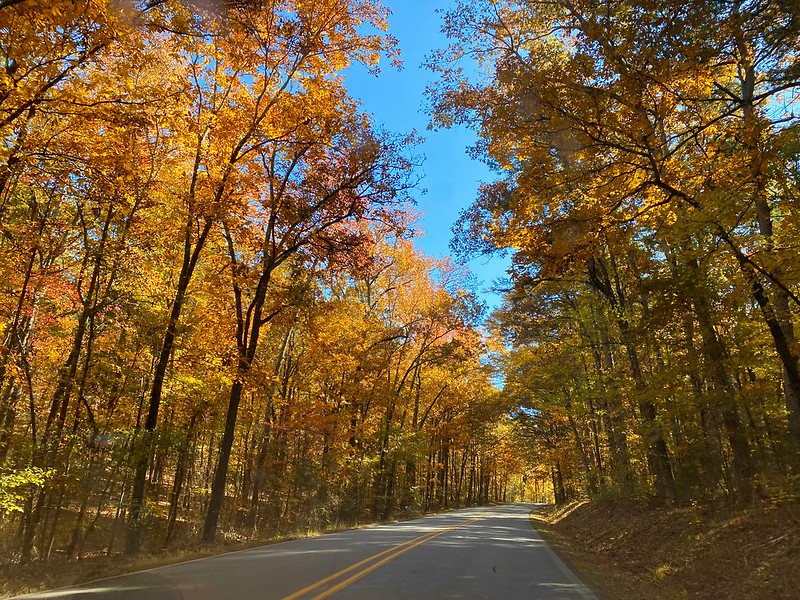Nov. 16, 2021
Glorious fall: Where did those colors come from?
By Mary Hightower
U of A System Division of Agriculture
Fast facts:
- Dry spells helped color
- Fall colors are weather, species-dependent
(330 words)
(Newsrooms: With additional art at https://flic.kr/s/aHsmX7vZZ1)
LITTLE ROCK — The images all over social media seem to indicate one thing, that Arkansans have been very impressed with this autumn’s foliage show.
What makes one season more colorful than another? Kyle Cunningham, an extension forester with the University of Arkansas System Division of Agriculture, says a lot depends on the weather.
Dry spells and sunny days with cool nights can cause fall colors to be brilliant,” he said. “This is the weather pattern we experienced in late summer and early fall.”
According to the Nov. 11 report from U.S. Drought Monitor, more than half of Arkansas had a drought rating of some sort. Three months ago, only about 19 percent of the state had drought. By Nov. 11, that area grew to more than 61 percent.
The only time drought doesn’t help is “when prolonged drought stresses trees too far and leaves fall prematurely,” Cunningham said.
The colors change when the green chlorophyll pigments that harvest sunlight for photosynthesis degrade as the days get shorter and temperatures drop. This allows the leaves’ other colors to show. These include xanthophylls, which are yellow; carotenoids, which are orange; and anthocyanins, which are red.
Cunningham said the yellow and orange pigments are present during the growing season but are masked by the green chlorophyll.
“The anthocyanins occur as the chlorophyll breaks down and are developed by the tree to provide continued protection from excess sunlight so that the tree can continue to obtain and process nutrients and send them to the roots for storage,” he said.
As the days get shorter and temperatures begin to drop, the chlorophyll in leaves begins to break down. When the chlorophyll is gone, other pigments present in the tree reflect different colors of light.
Can humans enhance autumn color?
Cunningham said that “fertilizing trees may assist in making them vibrant and potentially hold leaves longer, but, the major forces including weather patterns, tree species, and day length will always be the controls of fall color.”
To learn about extension programs in Arkansas, contact your local Cooperative Extension Service agent or visit www.uaex.uada.edu.
Follow us on Twitter and Instagram at @AR_Extension. To learn more about Division of Agriculture research, visit the Arkansas Agricultural Experiment Station website: aaes.uada.edu. Follow on Twitter at @ArkAgResearch.
To learn more about the Division of Agriculture, visit https://uada.edu/. Follow us on Twitter at @AgInArk.
About the Division of Agriculture
The University of Arkansas System Division of Agriculture’s mission is to strengthen agriculture, communities, and families by connecting trusted research to the adoption of best practices. Through the Agricultural Experiment Station and the Cooperative Extension Service, the Division of Agriculture conducts research and extension work within the nation’s historic land grant education system.
The Division of Agriculture is one of 20 entities within the University of Arkansas System. It has offices in all 75 counties in Arkansas and faculty on five system campuses.
Pursuant to 7 CFR § 15.3, the University of Arkansas System Division of Agriculture offers all its Extension and Research programs and services (including employment) without regard to race, color, sex, national origin, religion, age, disability, marital or veteran status, genetic information, sexual preference, pregnancy or any other legally protected status, and is an equal opportunity institution.
# # #
Media contact:
Mary Hightower
Chief Communications Officer
University of Arkansas System Division of Agriculture
mhightower@uada.edu
